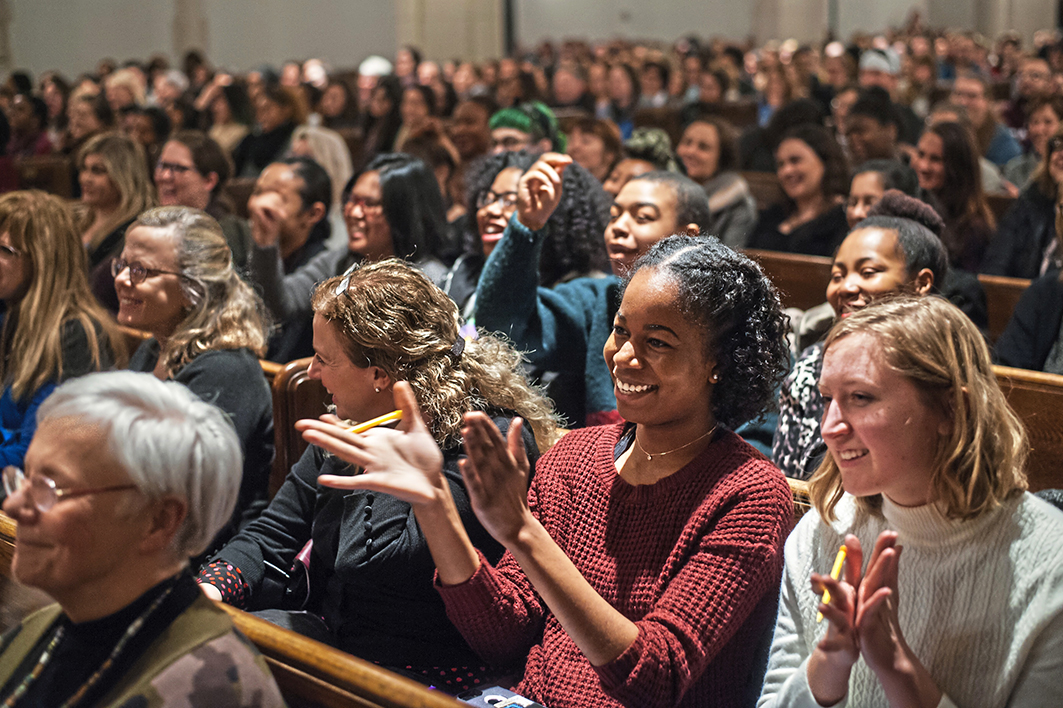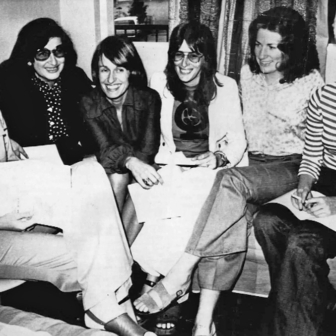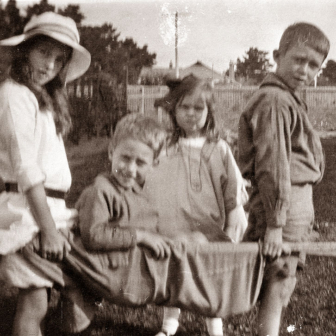On 9 October last year the Care Leavers Australasia Network held a silent protest at the Victorian government’s failure to commit to the national redress scheme for survivors of child sexual abuse. Victoria wasn’t alone. “Unfortunately, the federal government’s ‘opt-in’ national scheme has given institutions an ‘out’ and, so far, not a single state government has committed,” said the network’s executive officer, Leonie Sheedy. She called on Labor premier Daniel Andrews to take the lead in tackling what looked like a backward slide. But her words were competing with an abuse story that was grabbing all the headlines.
The Harvey Weinstein scandal had broken on 5 October, and dominated the following week’s news as a succession of Hollywood A-listers came out with accusations and denunciations. British actress Romola Garai told the story of how she was lured into Weinstein’s hotel room at the age of eighteen for an “audition,” only to be confronted by Weinstein in a bathrobe, clearly expecting some very personal attention. Over the next few weeks, the list of Weinstein’s accusers grew to include Gwyneth Paltrow, Angelina Jolie, Rose McGowan, Lena Headey and Uma Thurman. The common theme was that senior operatives in the industry had systematically covered up abuses of power, and that the encounters had a deeply disturbing impact on the young women targeted.
The allegations were undoubtedly serious enough to warrant the call for radical culture change in Hollywood. But there’s also something disturbing about the stark disparity between the glamorous figures who Weinstein preyed on and the victims of childhood abuse whose names we don’t know. Although many of Weinstein’s victims testified to the difficulty of speaking out about what they had been through, there they were on camera, some of the wealthiest and most successful people on the planet, attracting public sympathy and approbation.
Any note of scepticism, though, jars with supporters of #MeToo. The social media campaign was sparked on 15 October by Alyssa Milano, who sent out a tweet inviting anyone who had been sexually harassed or assaulted to write “me too” in response. Her aim was to encourage women from all walks of life to take advantage of the fallout from the Weinstein case and contribute to a collective testimony. It worked. Within twenty-four hours, the hashtag count for #MeToo was approaching half a million; on the evening of 17 October, CBS News reported more than twelve million Facebook posts, comments and reactions.
The rage, as Van Badham expressed it in a powerful article in the Guardian on 17 October, was the manifestation of a “mass, collective de-shaming.” She had a story of her own to tell, about falling into the hands of a predator whose pattern of behaviour replicated Weinstein’s in many respects. It was a coveted professional opportunity — his to grant, hers to merit. Young, sassy and over-confident, she thought she could handle the situation, but she found herself outmatched. Confronted with a sense of her own “peasant vulgarity” in the face of a sophisticated and fine-tuned strategy of enticement, she was unable to escape. Many years later, she was still blaming herself:
How palpable my envy is of the fleeing girls whose sense of self-worth was greater than mine. How deep my empathy runs for those whose social exclusion or inexperience recruits them into the universal premise of all cons: convincing the prey that the precise act of sin was always — always — their own idea.
One of the cruellest things about these acts, according to Jia Tolentino, writing in the New Yorker on 11 October, “is the way that they entangle, and attempt to contaminate, all of the best things about you.” Afterwards, she says, “you are rarely presented with a single good option.” After that piece was published, Tolentino’s inbox was flooded with personal accounts of rape and harassment. And shame. She replied to all of them, crushed, she said, “by how little they expected.”
Tolentino has no difficulty in sympathising with Weinstein’s more high-profile victims, recognising in them the same tone of “muted sadness” and “long-kept knowledge of diminishment.” And perhaps not all of those “fleeing girls” who got away from him were blessed with the sense of self-worth Badham might accord to them. In Tolentino’s verdict, “there is no good exit from a hotel room with Harvey Weinstein.” And, she says, she saw a backlash coming almost from the moment the Weinstein story broke.
If the #MeToo wave was a tsunami, the backlash is a choppy mess of contending currents. First comes the legal question. Germaine Greer warned that powerful men were already briefing their lawyers and “women who have given testimony now will be taken to pieces.” The defamation suits are already mounting, with potential for huge damages to be claimed in compensation for broken contracts. Predators do not themselves make easy prey.
Which raises another issue. Not all the prey are on one side of the equation. In a cultural environment in which accusation can lead to an immediate public attribution of guilt, men who are not predators may become the subject of vexatious and injurious allegations.
On 8 January, a letter to Le Monde signed by one hundred prominent women including actress Catherine Deneuve denounced the movement as “a craze for sending pigs to the abattoir.” Margaret Atwood’s use of the term “witch trial” to describe cases in which the subject was guilty because accused drew a virulent counterattack; Atwood had to defend herself against the charge of being a “bad feminist” for implying that the accusers were like the hysterical teenagers of Salem. There are three kinds of “witch” language, says Atwood: the first is simple name-calling, the second is the use of the term “witch-hunt” for a chase after something that doesn’t exist, and the third is a description of a trial in which accusation is taken as evidence.
The interventions by Greer, Deneuve and Atwood, all in their seventies, generated a counter-backlash focused on the generation gap. Postwar feminists were in a different social world, the argument goes, and their assumption that it is all about agency, about having the guts and the presence of mind to say no, is out of touch with the circumstances in which younger women now find themselves.
Even the aged can be naive, and it is naive to suggest that someone who has been through what Badham describes has simply failed the challenge of agency. That amounts to a glib denial of a complex social and psychological reality. But the scale of the #MeToo campaign, and the level of heat with which it is invested, have created the conditions for a fraught and unhealthy environment in which witch-hunts may also become a reality. These realities coexist, and the challenge we are faced with now is to hold them in some kind of balance.
So, what of the role of Hollywood in all this? From one point of view, it was the denunciation of Weinstein that got the ball rolling. The example of those charismatic actresses may encourage other women — “the women whose names we’ll never know,” in the words of Oprah Winfrey — to follow. It’s a case of mustering star power in the cause of social justice, in the best Hollywood tradition.
That, at least, seems to have been the intention behind the 7 January Golden Globe ceremony, where the catchcry “me too” was paired with the ultimatum “time’s up.” Winfrey delivered a barnstorming speech about new horizons, new dawns and the magnificent women who were going to take us to a time “when nobody ever has to say ‘me too’ again.” She sought to include some consciousness of hard experience in the rhetoric. “In my career, what I’ve always tried my best to do, whether on television or through film, is to say something about how men and women really behave,” she said.
In an attempt to bring some of the reality onto the red carpet, eight prominent female activists, each paired with a leading actress, were persuaded to join the procession. Michelle Williams arrived arm in arm with Tarana Burke, a Brooklyn social worker who came up with the “Me Too” slogan in 2006 as an expression for “survivors supporting survivors.” Burke has been sceptical of the current media campaign, insisting that there must be a continuing focus on marginalised people in marginalised communities.
When Williams first approached her with an invitation to the Globes, her response was, “Why? I’m trying very hard not to be the black woman who is trotted out when you all need to validate your work.” She agreed to go only as one of a contingent of women working on the front line to address problems of sexual violence and bullying. In the event, if it was window-dressing, at least the window was full enough to provide an effective group photo. But Burke’s shot across the bows was a much-needed alert.
Hollywood awards ceremonies are a festival of narcissism, and part of the self-love is a need to present oneself as the champion of higher and better causes. From the moment the stars stepped out onto the red carpet to when they rose, faces streaming tears, to applaud Winfrey’s oration, it was a chorus of virtue signalling. Who is this supposed to impress, and to what end?
One thing that could be said in its favour is that it was a coming together of the generations, as younger actresses alternated with veterans of the profession to contribute to the chorus of solidarity. Most significantly, it became evident that there were not two generations here, but three. The child actors from the television series Stranger Things have a growing fan following, as do many of the other stars who came to prominence in juvenile roles.
Dove Cameron, a hot property for Disney in The Descendants, a fantasy in which she plays the teenage daughter of the fairy Maleficent, is also a doyenne of the twittersphere, where she has over 1.3 million followers. Her admirers include the four young fashionistas commenting on the “best and worst dressed” for the YouTube channel Dirty Laundry, which garnered 1.1 million views:
Holy moly — Dove Cameron, oh my god, she is like — perfect shit — she’s so cute and she is supervocal about so many important movements going on that I think a lot of stars aren’t but if you check her Twitter, she speaks up, so I’m not surprised she joined in on this movement.
I did check Dove Cameron’s Twitter, and among the relentless parade of kooky selfies was a message for her legions of followers:
Women’s sexuality (and sensuality) is a natural, awe inspiring, SHIP-LAUNCHING energy that is a thing to be celebrated. It is the spark of life. It is the reason we are all here.
I am so thankful that there is no record of the platitudes I came out with at the age of twenty-one. Aside from that, there is cause for some reflection. I am a baby boomer, closer in age to Atwood and Greer than to Cameron, who is almost a generation younger than Van Badham. We’re looking at three generations who came to adulthood under widely different formative influences.
Greer and the feminist movement she inspired taught women not to be “sex objects.” That meant avoiding the kinds of clothing, make-up and general presentation associated with male fantasy. High heels and red lipstick were anathema, as were push-up bras, tight dresses, glitzy jewellery and pouty facial expressions. Cameron’s image is a concentrated fusion of all those things, but the idea of being an object does not trouble her.
Sexuality is energy, she says — and “celebrating” it seems to have little to do with the seduction of anyone else. It’s about self-image and self-affirmation, which become a currency of exchange between peers. The effusions of love and admiration on Cameron’s Twitter feed are mainly from other young women. She is their mirror. If there is absurdity in this, it seems an innocent kind of absurdity, but where do men figure, if at all? Perhaps such narcissism serves as a protective shell, but the risk is that it does nothing of the kind.
The #MeToo movement is predominantly focused on workplace harassment, and workplace conditions have changed radically since the baby-boom era. We may have had bosses who leered or insisted on short skirts and thought their secretaries were fair game, but if you didn’t like it, you could leave. There were always other jobs, and joblessness was not so hard to deal with in the hippie era, when it was easy to move between social circles or from place to place.
Workplace harassment now is a problem intensified by insecure contract work conditions and the growing number of migrant workers in precarious circumstances. Given that it is usually impossible to mount a legal case in situations of chronic harassment, the onus is on institutions of employment to deal with them, and establish protocols to prevent them, but who or what is to ensure that they do this?
In an industrial environment where corporate profits are the overriding concern, and where the practice of over-rewarding those at the top of the hierarchy feeds a sense of entitlement, we have the optimal conditions for predatory behaviour. Sexual abuse is an institutional perversion and a cultural pathology as much as it is an individual transgression. Here the concerns of #MeToo may converge with those of the Care Leavers Australasia Network, and if the “me” aspect of #MeToo can be reined in, there may be some lasting impact. •




